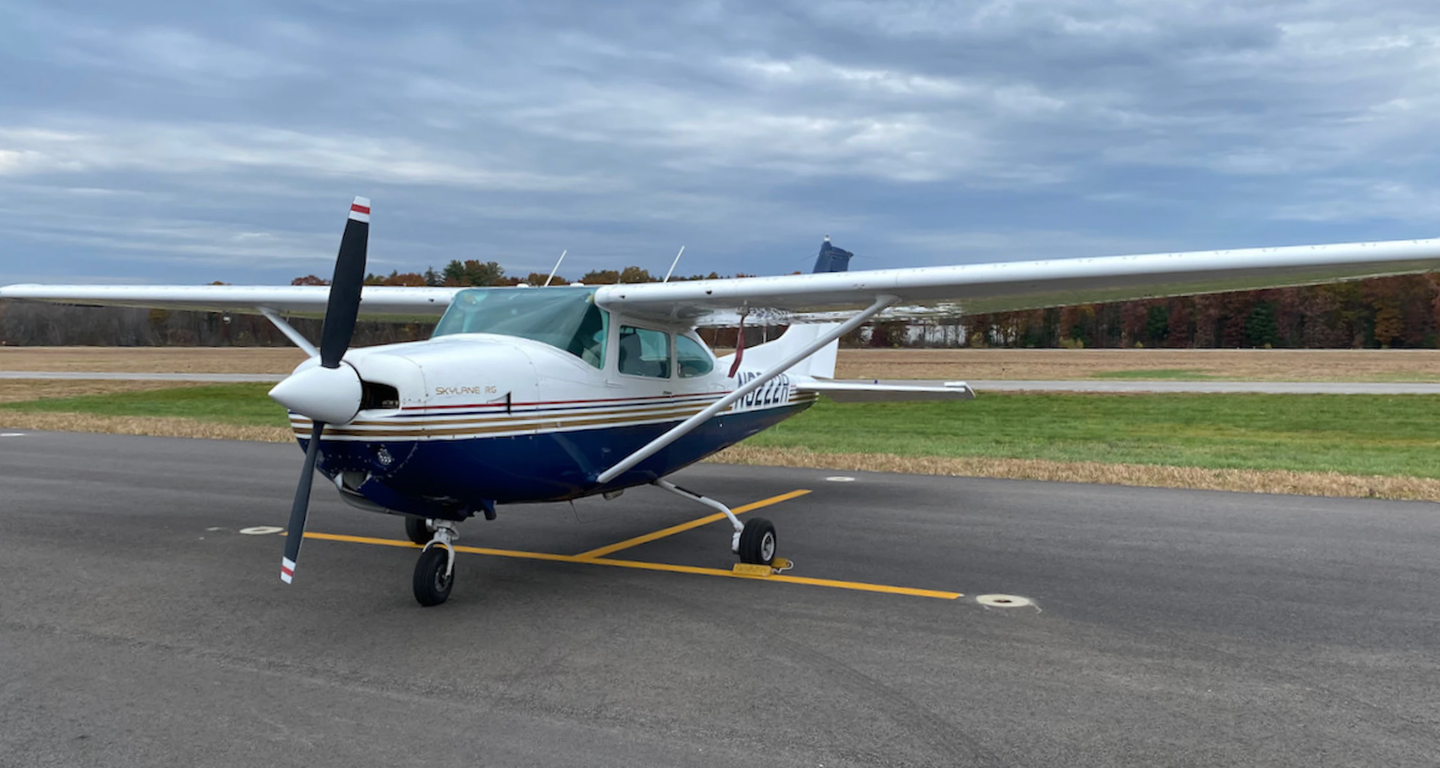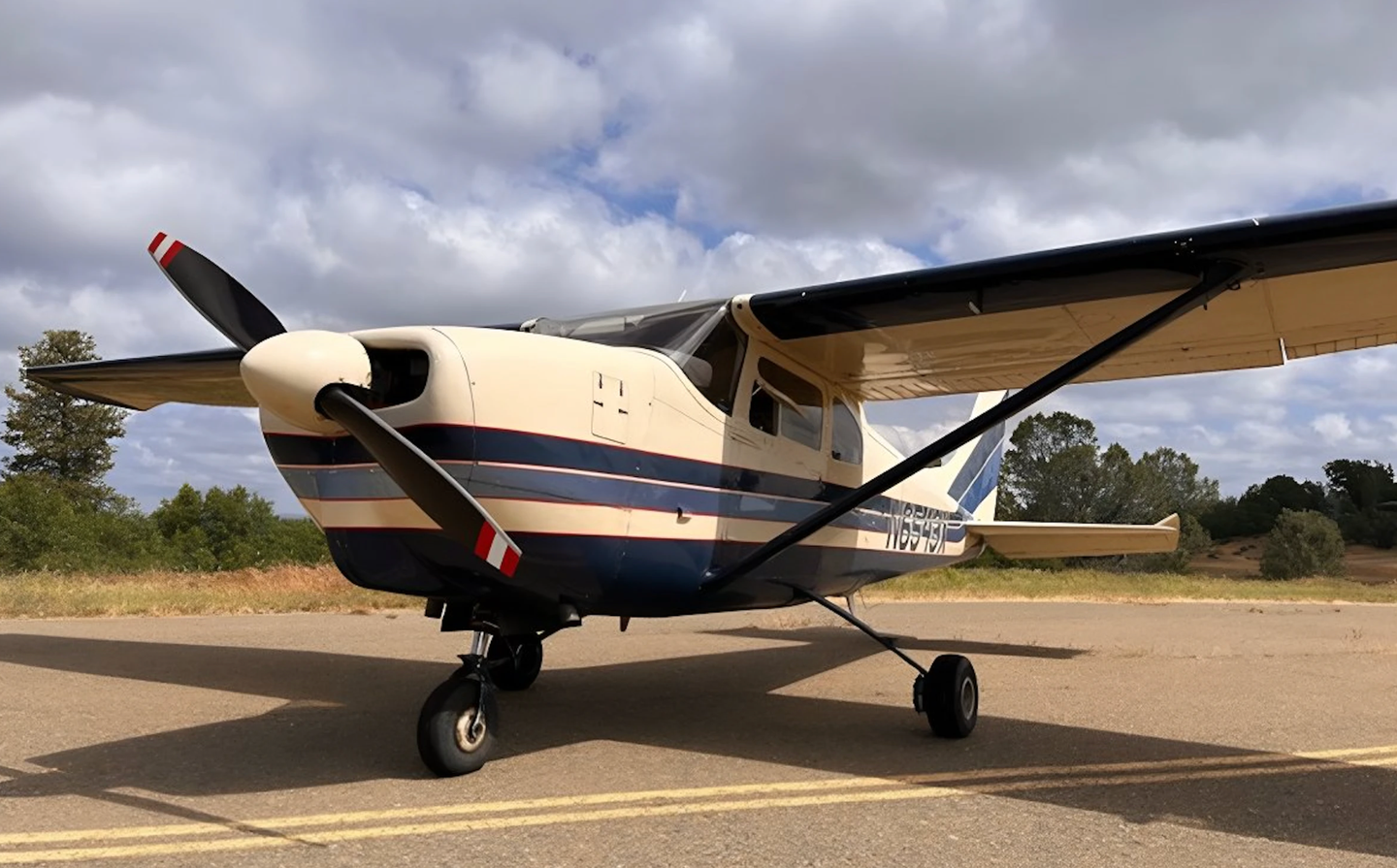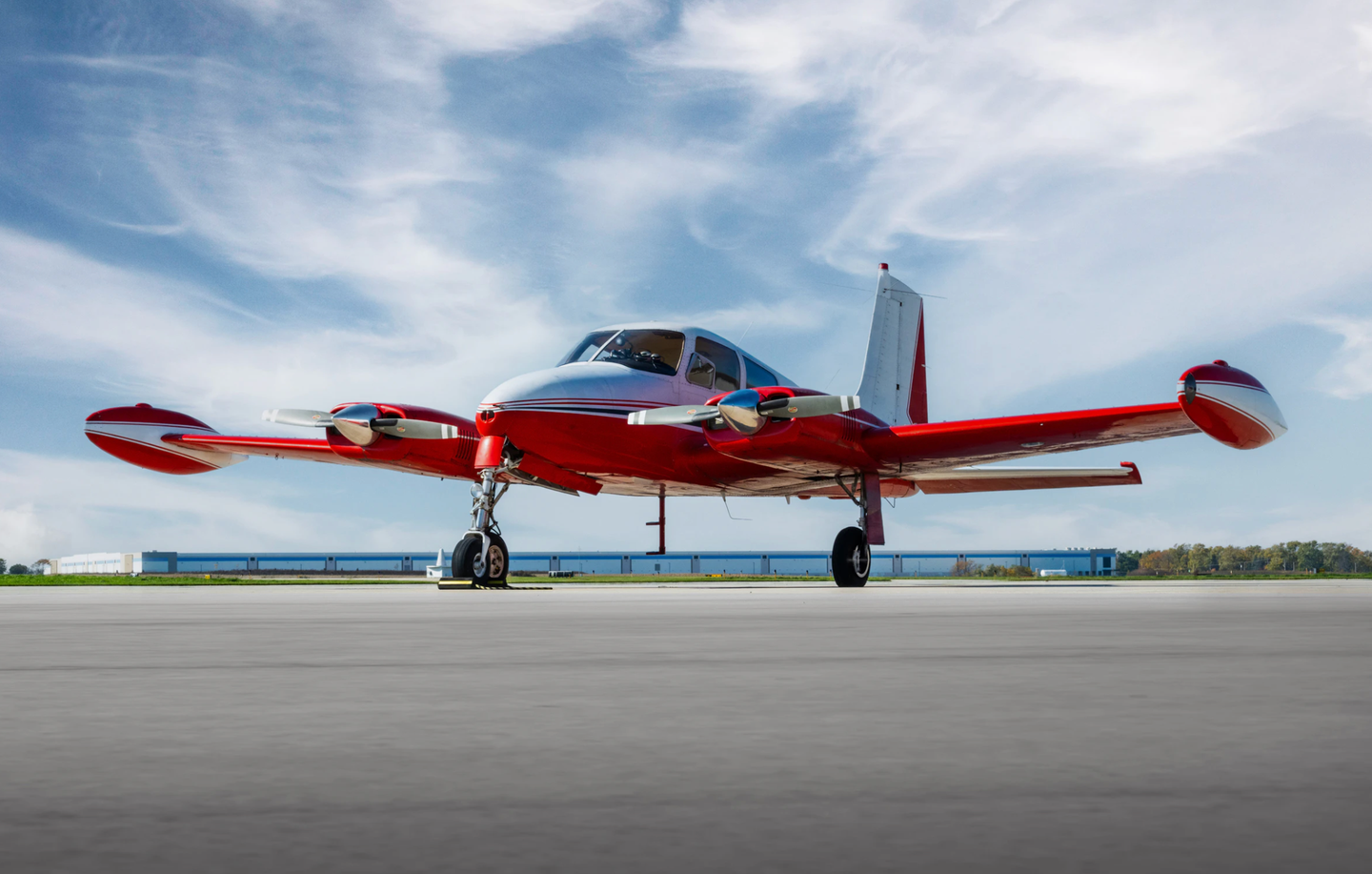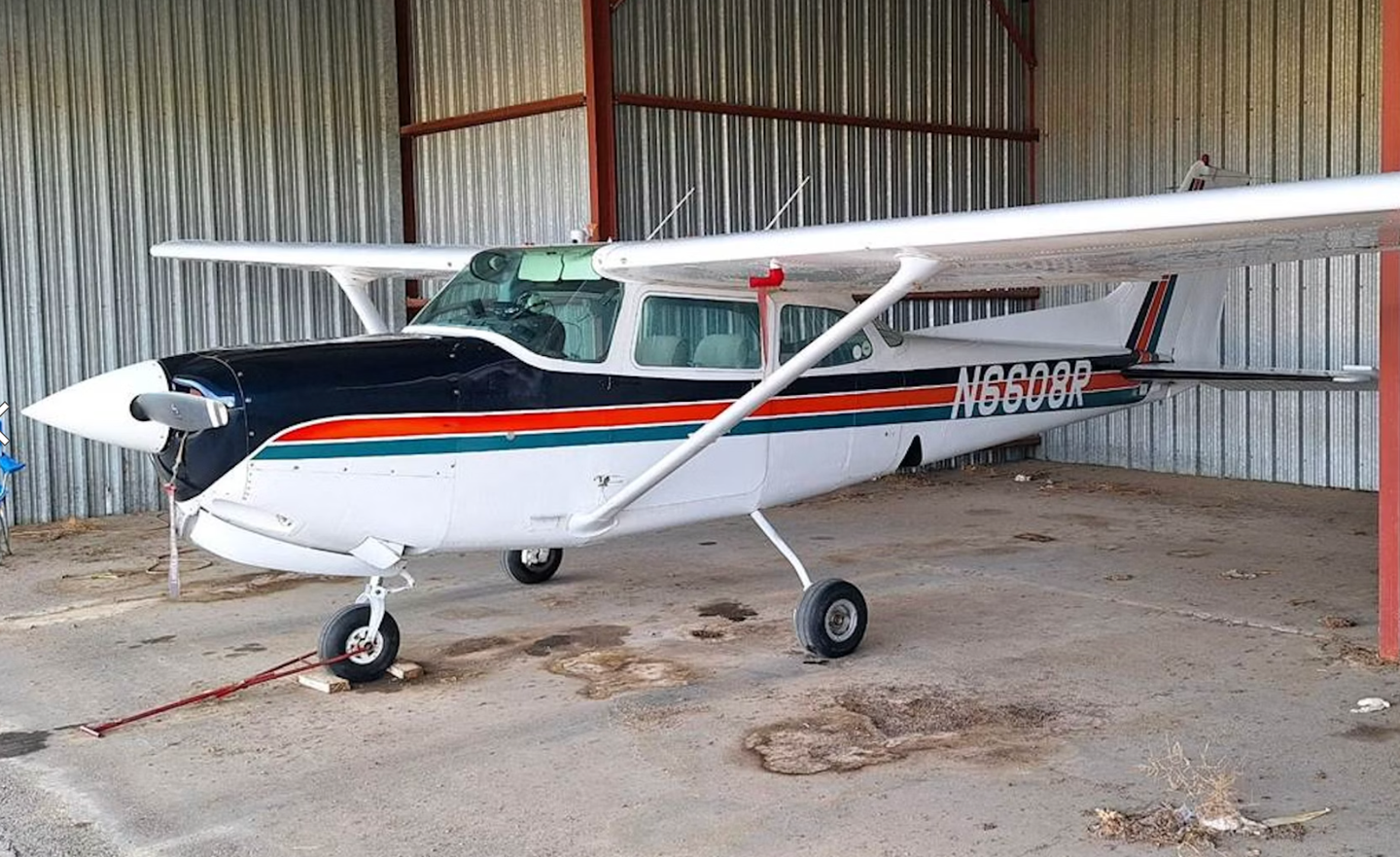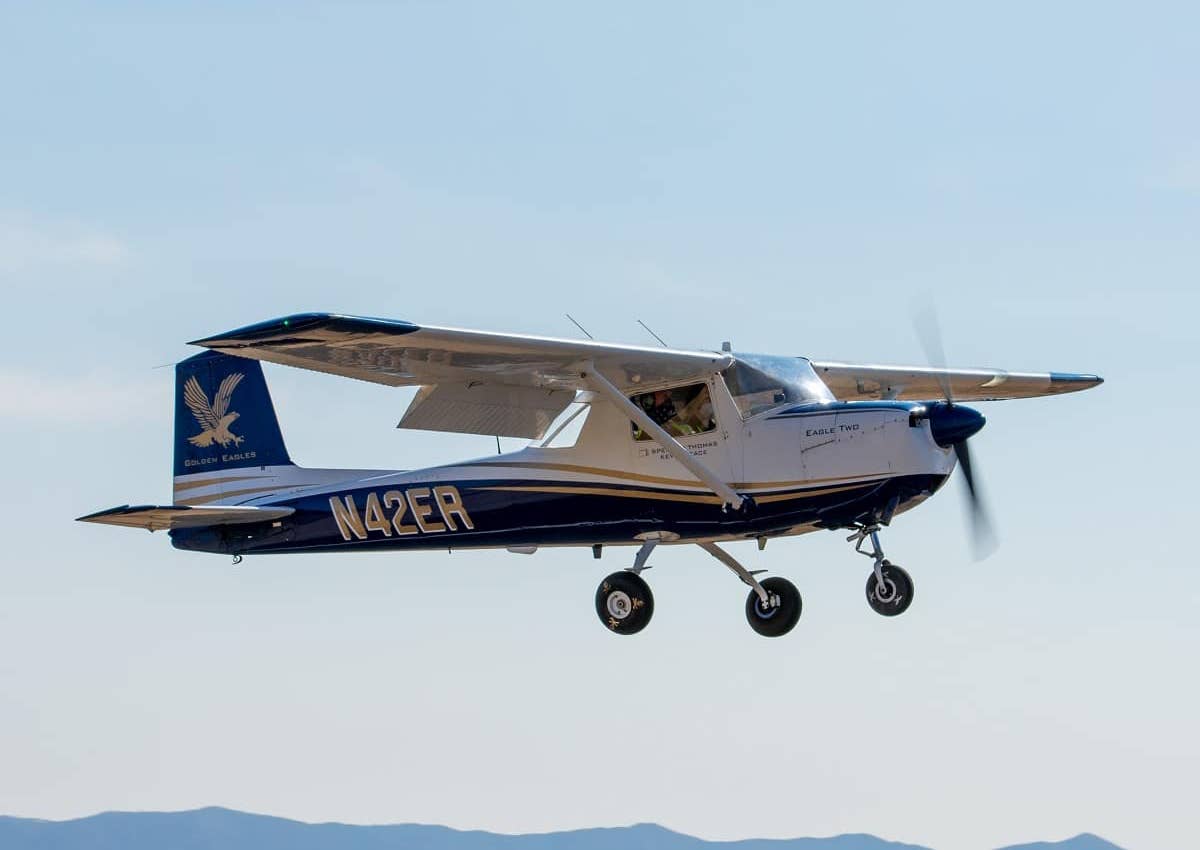170-Knot SUV
It’s the top of Cessna’s piston line, and not unlike ground-bound SUVs, the Turbo Stationair can haul (almost) anything you can close the doors on
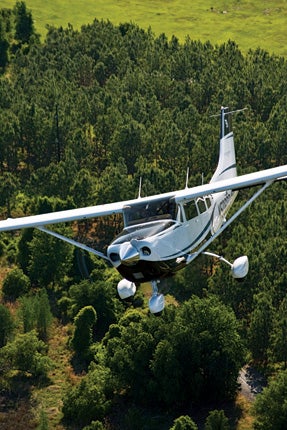 |
As one of the premier general aviation manufacturers, Cessna has always enjoyed something of a utility image. The conventional-gear 180 and 185 are near-legendary in the bush world, able to land and leap back out of places other airplanes would fear to roll a tread.
In nosewheel ranks, the 182 Skylane has a similar reputation as a hauler. Back in the days when airplanes were younger and lighter (just like people), the 182 could carry a full quartet in its four seats. Finally, the 206 Stationair could lift a hockey team, complete with sticks, helmets and protectors. (In fact, the early 206s had the distinction of being the only general aviation airplanes capable of carrying useful loads greater than their own empty weight.)
All four models were highly regarded as bush birds, though the taildragging 180/185 had an obvious advantage in off-airport operations. They didn't have the STOL performance of a Maule or Helio, but Cessnas were nevertheless highly prized among airplanes that worked for a living.
The Skyhawk and 150 were dedicated more to training, and the Cardinal RG and Centurion to cruising, but most other Cessna singles gained fame as hauling machines, capable of lifting big loads with big wings and plenty of power.
Inevitably, as empty weight increased and gross weight and fuel capacity remained static, useful load shrank. A typical Skylane, despite its still-considerable talents as an everyman's family airplane, is now a four-place, three-passenger machine with tanks topped. These days, according to Cessna, a fully fueled Skylane sports a 604-pound payload.
If you need four-place capability and then some, the better bet may be the Stationair. With a standard-equipped 850 pounds of full-fuel payload, the biggest piston Cessna offers heavy lift status for those with a need for its special ability to fly with a load.
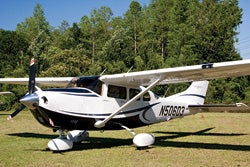 Indeed, it was no big surprise in 1994, when Congress passed the General Aviation Revitalization Act imposing an 18-year statute of repose, that Cessna announced it would resume production of the Skyhawk, Skylane and Stationair. Though everyone assumed Cessna would resume production of the 172 and 182, the 206 was an even more logical candidate, especially overseas where its heavy-hauling utility talents are more important.
Indeed, it was no big surprise in 1994, when Congress passed the General Aviation Revitalization Act imposing an 18-year statute of repose, that Cessna announced it would resume production of the Skyhawk, Skylane and Stationair. Though everyone assumed Cessna would resume production of the 172 and 182, the 206 was an even more logical candidate, especially overseas where its heavy-hauling utility talents are more important.
British attorney Chris Cope of the Isle of Man was looking for a specific set of talents. He needed six seats and a big payload, but not necessarily full six-place capability. He also wanted good stability for instrument flying in the cloudy skies of the U.K., TKS to help combat inadvertent icing encounters and a high service ceiling to help him top the weather. Cope looked at all the options, essentially the Beech 36 Bonanza, Piper Saratoga HP and Cessna Stationair.
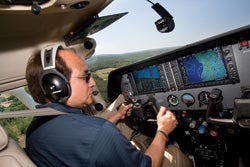 For Chris Cope, the T206's best asset is its generous weight limits. Above, Cessna Chief Pilot Kirby Ortega flies the Stationair for air-to-air photos. |
The attorney finally decided on a Turbo Stationair. He felt it was an "exceptionally strong airplane with the talent to handle the weather and the room to enclose a large family." He knew he was giving away an extra 100 pounds of payload for the benefit of turbocharging, but this still allowed 750 pounds in the cabin, easily enough to accommodate his normal passenger load of wife and four munchkins.
"I like the idea of separate rear cargo doors to load the kids in the aft cabin and six forward-facing seats," Cope told me. "That way, I'm not looking at the back of their heads from the left front seat. The aft seats are a little small, but so are my kids, so that's not a problem."
Cope found his near-new Turbo Stationair in St. Louis, Mo., and hired me to fly it from the Gateway City to Ronaldsway Airport on his island home, roughly halfway out in the Irish Sea between Great Britain and Ireland. I flew a second (new) T206 for this story at Sun 'n Fun 2009.
The T206's standard 87-gallon tanks would have been sufficient to make the Atlantic crossing by the northern route, through Iqaluit, Sondre Stromfjord and Kulusuk, well above the Arctic Circle. If you must minimize the distance, then you can fly legs no longer than 500 nm on that route, but Cope had arranged for a 50-gallon ferry tank to make things easier and the flight more direct. This gave us a theoretical six-hour endurance plus reserve, enough to cover well over 900 nm in no-wind conditions.
The trip didn't demand any high-altitude departures, but it was nice to know the Lycoming's twin Garrett turbochargers could have handled any airport in the United States or Europe without a loss of power. The T206 uses a 310 hp TIO-540-AJ1A engine, one of the smoothest of the big Lycs and also one of the most reliable. The same basic engine is rated for as much as 350 hp in other applications (Piper's Mirage, Navajo Chieftain, Mojave and Aerostar 700P) and recommended for 2,000 hours between overhauls on the Turbo Stationair.
| Stationair Adventure! |
| The image of the Cessna Stationair is one of a hard-working utility airplane, dedicated to helping its owner earn a living. To some extent, Bill Ellison of Bradbury, Calif., defies that image. His T206 primarily is used as an escape vehicle for family and friends.
Ellison owns Pack West Machinery, a company that manufactures packaging machines, and like any intelligent business owner who's engaged in interstate commerce, he has a need for fast, efficient transportation that doesn't rely on the scheduled airlines. Perhaps surprisingly, however, Ellison says he uses his plane as much for pleasure as for business. In the two years since he purchased the new Turbo Stationair from Tom's Aircraft in Long Beach, the owner has flown nearly 280 hours all over the Western United States with his family and friends. "I'm totally sold on this airplane for any mission I need," explains Ellison. "It's just the perfect traveling machine for me. I fly with my wife, son and daughter all over the West Coast. In the last two years, we've flown the Stationair back and forth to Kalispell and Great Falls, Montana, several times, to Lake Havasu, Arizona, up into Oregon, Washington State and Canada and a dozen other places. "The T206 is a great traveling airplane and very sure of itself. It's a stable airplane that drives right on through turbulence, and the Garmin G1000 makes the panel into a giant video game," Ellison comments. The owner flies the Stationair pretty much as it came from the factory, though he did replace the standard TIS avionics feature with an active TCAS that will identify traffic outside of major terminal areas. "I imagine a Caravan would be great someday," Ellison explains, "but I'm not sure what I'd do with it now. In my current situation, I don't need the seats or the extra room, and a Caravan wouldn't fly that much faster. For this stage of my flying career, the Stationair is exactly the right airplane at the right time." Read "What Fits In A Stationair?" to learn what Cessna 206 owners like Bill Ellison can pack into their "flying SUVs." |
Cessna's T206 features an easy 1,000 fpm climb from sea level, and certified ceiling is technically 27,000 feet (though the oxygen system isn't certified above 25,000 feet). Barrister Cope said he'd be flying in the bottom three miles of sky, since the perennial British weather usually tops at 10,000 feet or below. The aftermarket TKS system was intended to offer a hedge against accidental icing encounters, a not-uncommon occurrence year-round over the United Kingdom.
We flew the legs from St. Louis to Bangor, Maine, and on across to Goose Bay at 11,000 feet, well above the clouds, and the big Cessna seemed content rumbling along at max cruise. Fortunately, you don't need to fly high to benefit from turbocharging. Even at modest, non-oxygen heights, the heavy-breathing Stationair can cruise 10 to 15 knots quicker than the normally aspirated model.
After Goose Bay, bad weather in Narsarsuaq forced us to deviate north to Godthab, designated BGGH (B for not much, G for Greenland, GH for Godthab), 230 miles farther up Greenland's west coast. Flying in mid-June, daytime was nearly 21 hours long at such northern latitudes, and accordingly, we opted to refuel and push on to Reykjavik, lofting to 13,000 feet across the ice cap. The cap rose to nearly 10,000 feet as we cruised directly above the dome of the old Distant Early Warning station code-named "Sob Story." The farthest south of the three DEW line stations, it's now long abandoned and left to the vagaries of shifting ice.
(Back in the '70s and '80s, during the Cold War, we used to talk to those lonely souls stationed at Big Gun, Sea Bass and Sob Story. Once, while flying a Duke home from Amman, Jordan, to Fargo, N.D., in the early '80s, I dialed in 122.5 and asked the bored officer on duty at Sob Story if he could provide my position. He identified me in about 10 seconds, read out my exact lat/long, verifying my how-goes-it---no GPS back then---and told me I was at 20,000 feet. Vertical reading radar. Neat. I asked if his radar was accurate enough to give me my speed, and he answered unscientifically, "Buddy, I could probably tell you your cylinder head temperatures with this stuff. You're grounding 190 knots.")
On this trip, the Greenland overflight was our highest leg, and we saw cruise speeds of 150 to 155 knots, with groundspeeds of over 180 knots. The Stationair might seem to manifest the aerodynamic sophistication of a boxing glove, but it actually does fairly well for a 3,600-pound single with wheels and struts hanging in the wind. Fly tall in a Turbo Stationair, above 20,000 feet, and you can realize 164 KTAS at 75% power, about 22 knots better than the standard Stationair.
Cope and I were lucky on our crossing in his T206, with mostly VFR conditions, but we did encounter some ice on the run across the Denmark Strait between Greenland and Iceland. The ice gods hold a year-round party over the ocean this far north. Fortunately, I had the benefit of TKS and activated the system in "anti-ice" mode shortly before punching into the murk, just in case. The few small traces of ice that tried to form were quickly dissolved by the slick fluid. Anti-ice mode keeps a thin, even layer of liquid flowing across the wings and tail to minimize ice formation.
If you forget to activate the system and pick up any significant ice, you'll need to select "de-ice," which doubles the TKS flow, but will dissolve most minor ice buildups in a few minutes. You do need to be cautious with the TKS fluid, however, not only because the supply is limited, but also because it costs about $30 per gallon and isn't available at most FBOs.
Throughout our trip across the North Atlantic, that reassuring Lycoming never missed a beat, especially important in this part of the world. Water temperature, even in summer, rarely rises much above 45 degrees F. Failure is most definitely not an option (except on computers, where it's guaranteed as part of the program).
Unusually warm Reykjavik presented us with our first instrument approach, even if it was mid-June. Fortunately, BIRK (B for not much, I for Iceland, RK for Reykjavik) has a good ILS, and the 206 proved itself an easy IFR platform, sliding down the glideslope and making me look as if I knew what I was doing. Runway 19 appeared obediently under the nose as we popped out the bottom at 500 feet, and the big 206 transitioned from sky to ground with little help from me.
The trip south from Reykjavik to Wick, Scotland, across to Copenhagen for a quick business stop and finally to the Isle of Man went without a hitch, though the London controller tried to take us south about 300 miles out of our way, which would have demanded an extra stop. I talked him out of it by suggesting we'd need to cancel IFR, since we didn't have the range for such a major deviation. They do like their airway fees in Europe, so we were granted a more direct routing.
| Garmin G1000 Tips - By Joe Shelton |
 1) USE VS OR FLC FOR PRECISE NONPRECISION APPROACHES. When the autopilot is coupled to the glideslope, use the throttle to control airspeed. For nonprecision approaches, use the FLC (flight level change) or VS (vertical speed) options to set airspeed or rate of descent. Use VS when you want a specific descent rate; for example, to reach a step-down altitude. Use FLC when you want a specific approach speed; it makes timing nonprecision approaches easier. When using VS to set a descent rate, control airspeed with the throttle and/or additional drag (e.g., flaps or speed brakes). For FLC, control the descent rate with the throttle and/or drag. 1) USE VS OR FLC FOR PRECISE NONPRECISION APPROACHES. When the autopilot is coupled to the glideslope, use the throttle to control airspeed. For nonprecision approaches, use the FLC (flight level change) or VS (vertical speed) options to set airspeed or rate of descent. Use VS when you want a specific descent rate; for example, to reach a step-down altitude. Use FLC when you want a specific approach speed; it makes timing nonprecision approaches easier. When using VS to set a descent rate, control airspeed with the throttle and/or additional drag (e.g., flaps or speed brakes). For FLC, control the descent rate with the throttle and/or drag.
|
Since the delivery, Chris Cope has been flying his airplane all over the U.K. and Europe. "With the high cost of fuel in the U.K.," Cope comments, "I usually try for a power setting close to 65% and burning about 15 U.S. gph. Down low, this allows a TAS of about 130 knots, as airspace restrictions above 10,000 feet make it difficult to operate much higher."
Cope says he loves the TKS and the Garmin G1000 glass panel, but the lack of weight limitations is a major advantage: "I can fly with full tanks and the family, and carry as many bags, push chairs and as much children's paraphernalia as we can squeeze in."
The Stationair is certainly among the most versatile airplanes in Cessna's lineup, adaptable to oversize bush tires, amphibious or straight seaplane floats or skis. Base price of the T206 for 2009 is $565,500 in the standard wheeled configuration.
That's exactly $40,000 more than the normally aspirated version, but if you're like Chris Cope and need a flying SUV with the ability to carry a big load and operate above the weather, then the Turbo Stationair could be exactly the airplane for your travel needs.
| What Fits In A Stationair? | ||||||
The short answer is: pretty much anything! Fact is, Stationairs often serve in the boondocks of the world as freighters with all seats except one removed. Because the forward cabin door is on the left and the aft cargo doors are on the right, some pilots leave the right seat in place to facilitate loading longer cargo. The cabin is 12 feet long from firewall to aft bulkhead. With carrying space that's 50 inches tall and 44 inches wide, the cabin offers an impressive 101 cubic feet of space to enclose a little of anything. This means you could theoretically load aboard anything from surfboards to mountain bikes, camping gear to a dressed out moose, or construction materials to power tools.
Stationairs have been employed in aerial survey with cameras mounted in the floor looking down through the belly. They've been operated as speed-enforcement aircraft and emergency-response vehicles by various state police and fire agencies with spotlights, PA systems, tracking equipment and video recorders. They serve in power-line patrol and with fish and game departments. There are even some television stations that use the type for traffic reporting. The greater limitation may be pounds rather than space. With full fuel aboard (87 gallons), a typical T206 offers about 600 working pounds with a pilot up front. |
||||||

Subscribe to Our Newsletter
Get the latest Plane & Pilot Magazine stories delivered directly to your inbox

 2) KNOW THE DENSITY ALTITUDE WHEN OPERATING HOT AND/OR HIGH.
2) KNOW THE DENSITY ALTITUDE WHEN OPERATING HOT AND/OR HIGH. 3) VERIFY FLIGHT PLAN CHANGES.
3) VERIFY FLIGHT PLAN CHANGES.




